Read a Linux Hard Drive on Windows
If you have a Linux distribution sitting alongside Windows on your PC, y'all'll accept no problem accessing your Windows drive. NTFS, the default Windows file system, is well supported, and nearly Linux distros volition exist able to mount NTFS drives with ease.
The same can't exist said for Windows users, however. Common Linux file systems like Ext4 aren't supported. If you want to admission Linux partitions in Windows, you'll need to install some additional software to practice the job.
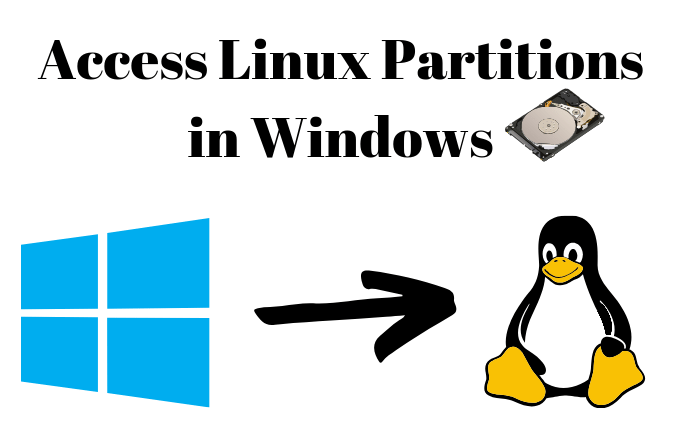
Choosing The Right Software for Linux Partitions
There are several software options for Windows users looking to access their files on Linux. For many years, Ext2Fsd has been the go-to option, allowing you to read and write to your Linux file systems within Windows itself.
Unfortunately, Ext2Fsd hasn't been updated since 2017, and the penultimate release, 0.68, had a "critical bug" that could corrupt your data on Ext4 drives with 64-scrap mode enabled. The site for Ext2Fsd has gone downward, and information technology'southward unclear whether Ext2Fsd 0.69 fixed this problems.
It'southward still an choice if you need write access to your Linux bulldoze, but given the risks, it isn't our chief recommendation if y'all take a 64-chip Ext4 Linux partition. Brand sure you support any critical data get-go and use simply the virtually recent, 0.69 release of Ext2Fsd.
As an alternative, we recommend DiskInternals Linux Reader. It lets you access files from the near common Linux file systems. Unlike Ext2fs, information technology doesn't do this through Windows Explorer, but through its ain file manager. It's also gratis for y'all to use.
It won't let y'all write files to your Linux bulldoze direct, but you tin salve any files you need to edit to your Windows bulldoze. A similar, open-source alternative, Ext2read, is besides available for y'all to utilize, with many of the same features. Yous don't demand to install Ext2read, as it comes every bit a portable .exe file.
Using DiskInternals Linux Reader
DiskInternals Linux Reader is freeware, so yous don't have to pay to download and apply it.
To begin, you'll need to download the Linux Reader installer. Open the installer, accept the terms, ostend your installation location and click Install.
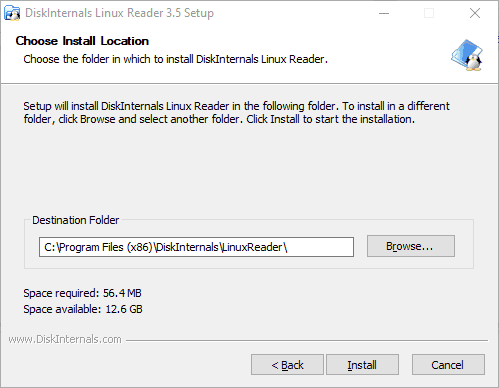
Once the installation is complete, make certain the Run DiskInternals Linux Reader checkbox is checked, and so click Finish.
The Linux Reader client is well designed and has some similarities in design to the Windows File Explorer. You'll run across a list of your drives, including whatsoever removable storage like USB flash drives or SD cards.
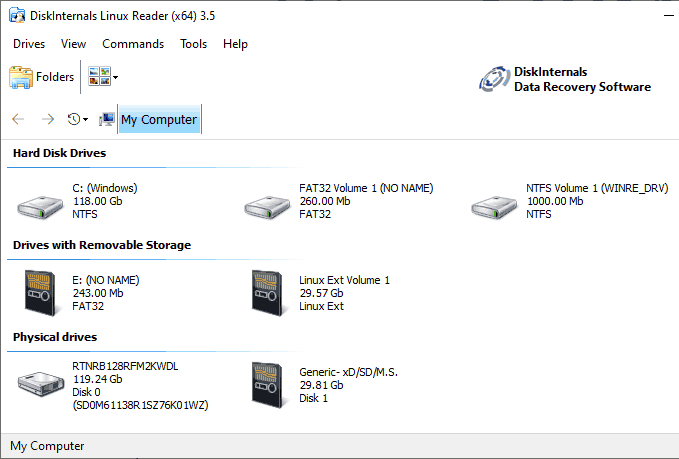
Find your Linux partition, under either Hard Disk Drives or Drives with Removable Storage.
You lot tin either double-click to view your files, or right-click and select Open Partition from the drop-down menu instead.
You'll see a dissever-screen, with the top half showing files and folders on your Linux drive. As we've mentioned already, you tin can't brand any changes to the drive directly. You'll need to copy the files to your Windows drive, or to another Windows-suitable partition.
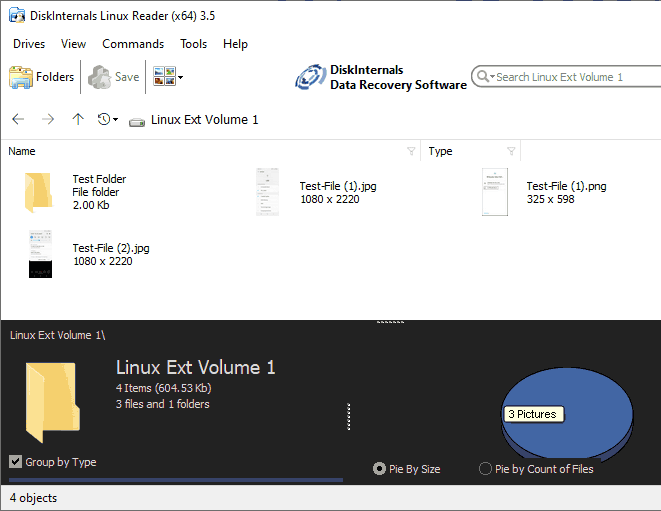
To exercise this, select the files and folders you want to copy. Right-click the selected files and click Save.
In the Export Wizard, you'll encounter the option to relieve files is already selected.
Click Next.
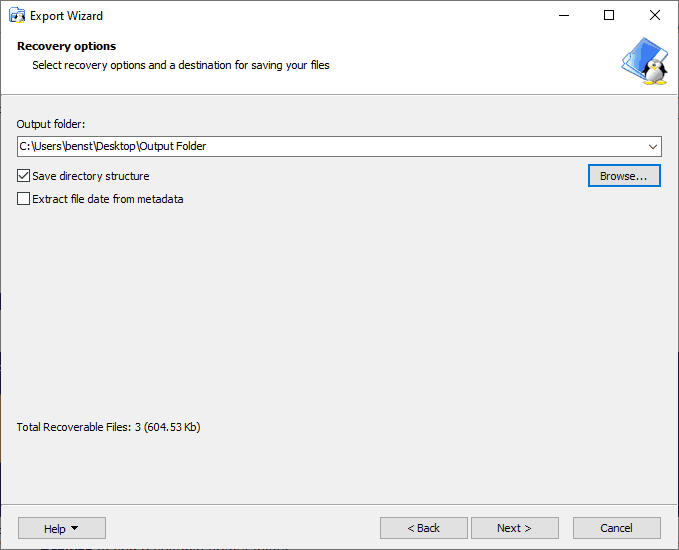
Choose the location to save your files and folders. You can blazon the location yourself, or click Browse to find a suitable output folder before clicking Next.
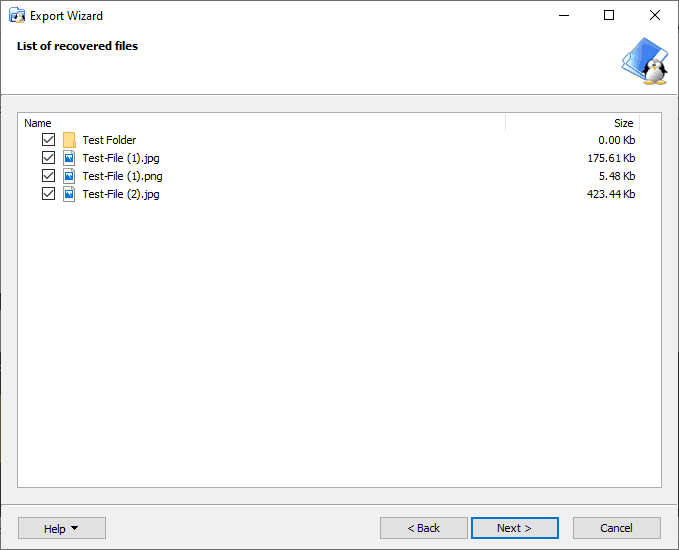
You'll see a final list of your called files and folders. If you want to remove any files or folders before the copying process begins, uncheck the checkbox next to whatever items.
Click Next to proceed.
Once completed, you'll see a last confirmation, confirming the number of files and folders copied, as well every bit the save location. Click End to shut the Export Wizard.
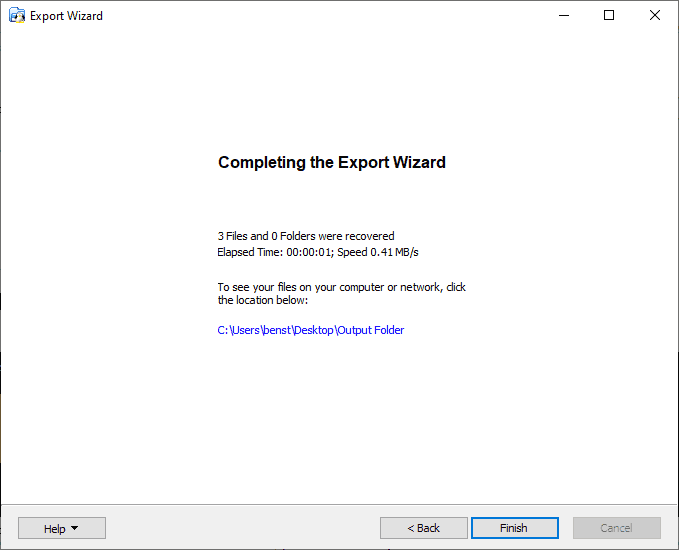
While DiskInternals Linux Reader doesn't let you to modify files or folders direct, yous can use information technology to quickly admission whatsoever essential Linux files. You can then transfer these back to your Linux drive when you're running Linux or, if yous're willing to have the risk, y'all can use Ext2Fsd instead.
Read & Write Access With Ext2Fsd
Ext2Fsd, as we mentioned previously, is the only pick for users who need to make changes to files or folders on their Linux drive directly from within Windows. Once information technology's installed, you can access your drive from inside Windows File Explorer as normal. Ext2Fsd 0.69 is recommended, peculiarly for users with Ext4 64-fleck Linux partitions.
To start, download the Ext2Fsd installer file and begin the installation. Accept the terms and installation location, and make sure that under Select Additional Tasks, all the checkboxes are checked.
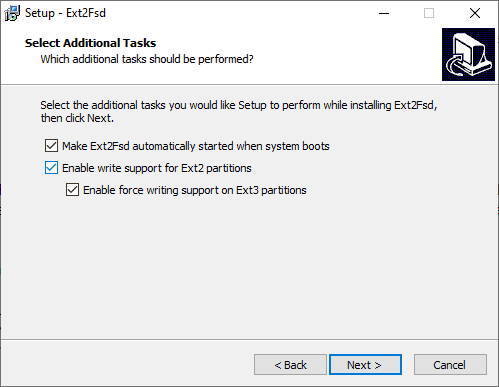
Once the installer is completed, yous'll be asked to restart your PC. Safely close whatever essential programs and click Finish to reboot.
In one case you've rebooted, see if you spot your bulldoze in File Explorer and double-click to open it. If you lot don't see it, open the Ext2 Volume Managing director, correct-click your bulldoze, and click Assign Drive Letter of the alphabet.
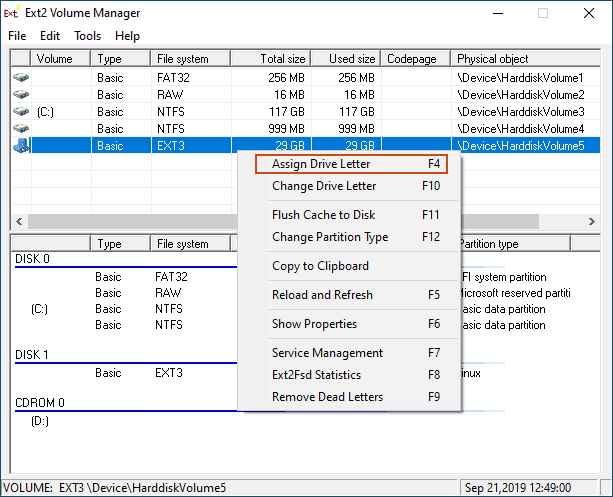
Every bit soon as a drive letter is assigned to your drive, yous should be able to see information technology in File Explorer. Yous'll be able to create, copy, motion, or delete files every bit you would any other drive, but given the risks, don't use this for critical information unless you lot're certain you have a backup available.
Safely Accessing Your Linux Files On Windows
The safest method for accessing Linux files or folders is to use a read-only option like DiskInternals Linux Reader. With software like this, the chances of corrupting your files are nothing.
If y'all admittedly need to edit files or folders on your Linux drive, Ext2Fsd volition permit yous to practise it, but take care to avoid risks by using the most contempo version, and only on a drive with non-disquisitional files.
If yous desire to avoid this problem in the future, consider having a "pooled" Linux sectionalisation drive (formatted equally NTFS) to share your files beyond both systems, or sync your files to Google Drive instead.
Practice not share my Personal Data.
Source: https://helpdeskgeek.com/how-to/how-to-access-linux-partitions-in-windows/
0 Response to "Read a Linux Hard Drive on Windows"
Post a Comment